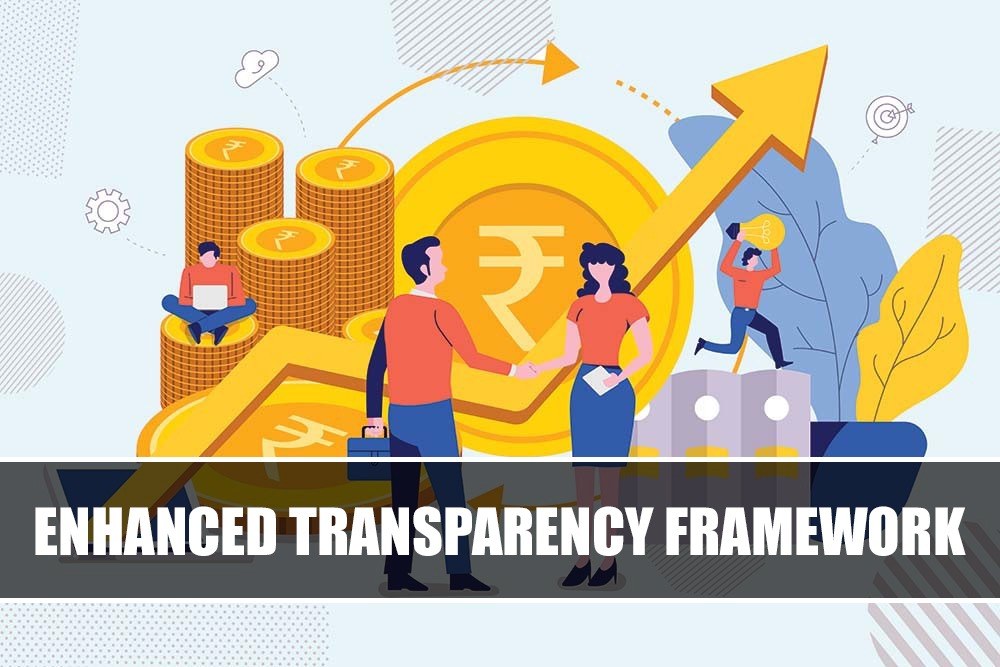
What is ETF ?
Think of the Enhanced Transparency Framework as a set of rules and guidelines that help make things clearer and more understandable. It’s like when you’re playing a game with your friends and you agree on some rules beforehand so that everyone knows how to play fairly. In this case, the Enhanced Transparency Framework is used in international agreements and discussions, especially about things like climate change. It’s a way for different countries to agree on how they will share information about the actions they’re taking to address important issues like reducing pollution and greenhouse gases. Imagine you and your friends are working together on a big project, and you all want to know what each person is doing to contribute. The Enhanced Transparency Framework is like a way for each country to show what they’re doing to help the environment. This helps build trust and confidence among countries because everyone can see if they’re actually doing what they promised. Specifically, the enhanced transparency framework guides countries on reporting their greenhouse gas emissions, progress toward their NDCs, climate change impacts and adaptation, support provided and mobilized, and support needed and received. The enhanced transparency framework also includes processes for technical experts to review reported information and a multilateral peer review where countries can ask questions of one another.
Decisions and Timelines from COP24
- Countries adopted the guidelines necessary to operationalize the enhanced transparency framework.
- They agreed to report under the enhanced transparency framework through documents known as biennial transparency reports (BTRs). “Biennial” just means these reports will be done every two years.
- The first BTRs will be due by December 31, 2024. 4. Countries will complete their existing transparency reports by December 31, 2022 (for developed countries) and December 31, 2024 (for developing countries
Difference between Existing UNFCCC Arrangements and Paris ETF
A lot of the detailed rules for sharing information have been improved compared to the older ways of sharing information, especially for countries that are still developing. The chart below shows some of the important ways that the new and improved transparency framework is different from the old rules under the UNFCCC (a climate change agreement).
| Existing UNFCCC Arrangements | Paris Agreement’s Enhanced Transparency Framework |
| Different requirements for developed and developing countries. | All nations follow the same rules and steps. Developing countries that require it due to their capabilities are given some room to adapt, but this flexibility is limited by the specific rules outlined. Developed countries have an obligation to report on the money they’ve given and gathered for climate efforts. Other countries that also give money are suggested to share this information, although it’s not mandatory. |
| Different reporting vehicles—biennial reports for developed countries and biennial update reports for developing countries. | Every nation will give biennial transparency report . This report covers similar topics as the older reports, but now it’s broader. It includes optional details about the effects of climate change and how countries are adjusting to them, which also covers issues like losses and damages. Plus, there’s a strong focus on monitoring how well they’re doing in reaching their climate goals |
| Different expert and in-person peer-review processes. | Every country will be involved in the same process of having their work reviewed by technical experts, and their progress will be discussed together with multiple nations. This progress assessment now includes an online aspect, which lets experts from far away take part in the discussions. |
| Not existing process for planning improvements. | Nations are required to create a plan outlining how they will enhance their reporting methods gradually. |
Conclusion
In conclusion, the Enhanced Transparency Framework is like a new and improved way for countries to work together on addressing environmental challenges, especially related to climate change. It ensures that all countries, regardless of their development status, follow same rules and guidelines when sharing information about their efforts. This helps build trust and accountability among nations. The framework introduces more inclusive and detailed reporting, encouraging countries to provide additional information about their climate impacts, adaptation strategies, and progress towards their climate goals. The review processes have been standardized, with the added benefit of online participation, making it easier for experts from different places to contribute. Moreover, countries are now expected to outline plans for enhancing their reporting techniques over time, showcasing a commitment to continuous improvement. Overall, the Enhanced Transparency Framework aims to create a fair and transparent platform for global cooperation in combating climate change and fostering a healthier planet for present and future generations.
